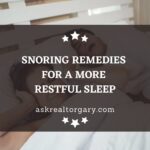I’ve had the Zeo Sleep Manager system for almost a year now, and have used it almost every night or the first three months (then ad-hoc from then). I think it’s time now to give a review of the product, as I feel I can now speak from some experience.
Contents
The Contents In The Box
The Zeo Sleep Manager that I bought was the Mobile version of the product – it cost me about $100 at Best Buy. It’s basically a headband and a charging/bluetooth station in the box – you download the Zeo app from the iTunes app store (for an Apple iPhone, iTouch or iPad) or Google Play for the Android app.

The combination of the headband/charger, the Smartphone, and the apP, make up the entire data-logging system (Zeo provides a website for further analysis).
If you were to buy the bedside version of the Zeo, you would spend a bit more money and would have an “alarm-clock-like” device in addition to the headband – no charging station (built in to the bedside device) and no Smartphone ap. You would also get some additional data ports on the back of the desktop device – useful for those of us that want even more, raw data from the Zeo.
I have both an iTouch and an Android Smartphone, so I downloaded both apps – they’re free because they don’t work unless you have a Zeo headband. I can go back and forth between the two devices with no apparent problems. The app user interfaces are, however, slightly different.
Also Read –
- Vitamin D – Build Better Sleep
- Sleep Restriction – Build Better Sleep
- Natural Cures For Central Sleep Apnea
When you get the app, you go online to Zeo and watch a video to show you exactly how to get the headband and the Smartphone talking to one another. It’s a very simple process, and only takes a few minutes.
The Data Zeo Gathers
Every night, you start the Zeo app on your smartphone. It should “see” the headband in it’s dock (via Bluetooth), but if it doesn’t, there’s a simple process of re-docking the headband so it knows it’s there.
When you take the headband out of the charging stand (where it’s been all day charging, because it stays on your head transmitting data back to the Smartphone all night), the Smartphone ap will tell you to put the band on your head. A few seconds (sometimes minutes) later, the Smartphone app will tell you that it has synced with the headband, it’s logging data, and now it’s time to go to sleep.
You have to keep the Smartphone plugged in all night because the Bluetooth activity would cause it to drain the battery before morning – and you’d likely lose half your sleep data in the process.
During the night, the headband will monitor your brainwaves and determine the state of sleep that you’re in at that moment. It evaluates the stages every few seconds, and reports back to the Smartphone every couple of minutes. Awakenings that last for less than two minutes are not reported (everyone has these short awakenings at night).
I’ve read quite a bit on the actual monitoring process and the decisions that Zeo app makes about what sleep stage you’re in. I’ve been quite impressed by the decision making process that they go through. It seems every question of “why this state and why not that state” and “why do you decide this and not that” have been answered with a lot of thought and insight. There’s good science behind everything that they say, so the net-net is you can trust their judgement.
Every morning, Zeo will give you a “score” of how you slept last night – they call this the ZQ. This ZQ number is very personal – everyone’s will be different – but it’s a good relative measure of how you slept. If you had a lousy night’s sleep one night, it should be reflected in your ZQ. If it was a great night, again it should be reflected in a higher ZQ.
In addition to this one ZQ number, the Smartphone ap will show you basic information like the amount of Deep Sleep you got, REM you had, number and duration of Awakenings you experienced, Light Sleep you got, and the Total Sleep you received.
The screen on the Smartphone will only show your sleep in 5 minute increments, because they run out of screen space – but when you look at your data on the web, there’s much more detail.
If all that Zeo offered was this, I’d be impressed. But there’s much, much more.
The User Website Zeo Provides
Unlike it’s predecessor, the Smartphone-based Zeo Mobile system automatically uploads your data from the night as soon as you re-dock the headband in the morning. (There is a cumbersome SD-card load/unload process to go through with their bedside device.)
Once this data is uploaded (it connects though the WiFi in my house, although I assume that it would connect using a cellular data connection on your Smartphone if that’s all it could find), it becomes much more useful. The night/week/month’s data is manipulated in several different ways, and gives you insight into your sleep that you could never get without this system:
You can hover over any of these nights to see:
- Total Sleep (total Z)
- Time in Deep Sleep
- Time in REM Sleep
- Time Awake
- Number of Awakenings
You can also go into the “Your Sleep” section of the website for a complete breakdown of every night that Zeo has logged – five different ways:
(1) A ZQ (total sleep quality) breakdown – by night, week or month. This sections includes the same information as above (Deep/REM/Awakenings/etc) in a graphical format.
(2) A history of your sleep over time – using whatever sleep variable you’d like (I chose REM for this graph).
(3) A detailed (every 5 minutes) graphical breakdown of your sleep every night.
(4) A trending graph, where you can look at any one variable as it changes over time, as well as show how other variables affect that trend.
(5) And finally a cause and effect graph – take any of the sleep factors (it has several defaults, and you can add your own) and chart them against eleven different sleep results – in this one I mapped the total time I had asleep versus the amount of activity I did just before bed.
The Zeo Personalized Coaching
There’s a section of the Zeo website set aside for personalized coaching. You fill in some basic information about yourself, and it starts to track the sleep data that you’ve uploaded to the site.
Over time, it takes this sleep data and starts to recommend changes you can make to improve your sleep. Some of these changes are pretty basic, and some are more advanced, but I found the advice to be very comprehensive. It’s a relatively slow process, as it would like to collect at least six nights of data for every “sleep target area” it addresses – and there are seven steps (so 42 nights minimum if you do all the steps). The sleep areas it will coach you through are:
- Evaluation of your sleep fitness today
- Learning how to relax your way to sleep
- Making your bedroom conducive to sleep
- Optimizing your sleep schedule
- Powering down in the evening
- Eating and drinking smarter to improve your sleep
- Harmonizing your sleep with your housemates
It wraps it all up with how to create a routine out of all that you’ve learned – sort of an amalgam of the sleep practices you’ve figured out that work for you.
Some Extra Stuff
Zeo also offers two more sections of their website that are quite valuable – a “Sleep Info Center” for in depth knowledge about sleep, and blog/forum for Zeo users to talk about anything and everything sleep related.
I posted a forum question just last week about a sleep conundrum that I had, and within minutes I had both a user and a Zeo employee contribute insightful answers to my question.
The Final Zeo Analysis
Getting the default “Detailed Picture of the Night” from your Smartphone (including some basic sleep variables), would be good information to have, and well worth the price.
When you stack on the detailed analysis you get on the user website, the coaching emails that you can sign up for, and access to the Zeo Sleep Info Center and user blogs, it becomes a no brainer.
If you have difficulty sleeping, are interested in improving you sleep for whatever reason, or just want to learn more about the 1/3 of your life that you spend unconscious, I highly recommend a Zeo Sleep Manager system.
I have the mobile version, and I cannot see any reason to buy the bedside version if all you want is this basic data (there’s a section in their Users Forum for “hacking the Zeo” which is best done with the bedside unit). Most people who are interested in a Zeo likely already have a Smartphone.
Addendum 1
I just found out that the Zeo ZQ (sleep quality) numbers and the Total Z (total sleep) numbers track almost 1:1. So what this means is that if you are truly looking for a sleep quality number that includes all the factors for quality sleep, and discounts the amount of sleep you got (which makes some sense), you’ll have to do some data manipulation of your own. There’s a good thread on the Zeo site. If you are a sleep hacker, and this calculation frustrates you, check out The Bulletproof Executive.
Addendum 2
I forgot to mention that the Zeo Sleep Management system was evaluated an found to be a very good representation of your actual sleep – comparable to a sleep lab and attended by sleep technicians. Their report is available here.
Addendum 3
Zeo has introduced an updated version of their app, called Zeo Pro. It seems like a slicker version of what I already have.
My review is based on the Zeo Mobile device that I have. I can only imagine that the new Zeo Pro+ has enhanced almost everything. I’ll review it when I get it!
Zeo also introduced a free smartphone app for the iPhone – it uses the built-in accelerometer to measure motion in your bed at night (you place it on the mattress). I have my doubts whether this method could ever be as accurate as the actual brainwave monitoring that Zeo Mobile/Bedside does.










